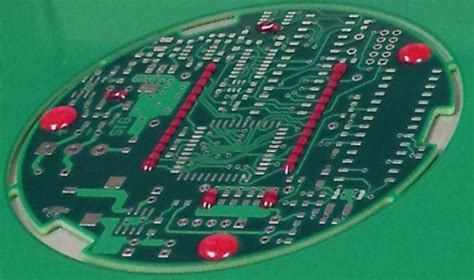What is Soldermask CTI?
Soldermask CTI (Comparative Tracking Index) is a measure of a printed circuit board’s (PCB) ability to resist electrical tracking across its surface under high voltage and humid conditions. CTI ratings range from 0 to 600 volts, with higher numbers indicating better insulation performance and resistance to failure from electrical tracking or shorts.
The CTI rating of a PCB’s soldermask is critical for high voltage applications where arcing or leakage currents could develop between closely spaced conductors. Choosing a soldermask with an appropriately high CTI ensures reliable operation and prevents field failures.
IPC Standards for Soldermask CTI
The electronics industry association IPC publishes standards for specifying soldermask CTI performance. The two most relevant standards are:
- IPC-SM-840E: Qualification and Performance Specification of Permanent Solder Mask
- IPC-4101: Specification for Base Materials for Rigid and Multilayer Printed Boards
IPC-SM-840E defines the following CTI levels for soldermask:
| CTI Level | Voltage Range |
|---|---|
| 0 | < 250V |
| 1 | 250V – 400V |
| 2 | 400V – 500V |
| 3 | 500V – 600V |
IPC-4101 specifies a minimum CTI of 325V for high voltage applications.
Factors Affecting Soldermask CTI
Several key factors influence a soldermask’s comparative tracking index:
Soldermask Material
The polymer composition of the soldermask has the greatest effect on its CTI rating. Most standard soldermasks are made from epoxy or acrylic-based polymers filled with silica or other inorganic fillers. These offer CTI ratings up to about 200V, sufficient for typical PCB applications up to 50V.
For higher CTI ratings up to 600V, specialty polymer systems are required, such as:
- Highly filled epoxies
- Silicone-modified polymers
- Polyimides
- Fluoropolymers
These high CTI material options tend to be more expensive than standard soldermasks and may require specialized processing or curing.
Soldermask Thickness
Thicker soldermask coatings generally provide higher CTI ratings by increasing the distance an arc must travel to short between conductors. Most soldermasks are coated 0.5 – 2.0 mils thick.
High voltage applications may require soldermasks up to 5 mils thick to achieve CTI ratings over 500V. However, increasing thickness can create challenges with fine feature resolution, hole plugging, and coating uniformity.
Surface Contamination
Ionic contamination on the soldermask surface from flux residues, finger oils, dust, or moisture can provide a conductive path that compromises CTI performance. Proper cleaning after soldering and throughout the assembly process is critical.
Soldermasks with high surface energy and good wetting properties are more prone to contamination. Highly filled or fluorinated soldermask systems tend to have lower surface energy and are more resistant to moisture and contaminants.
Electric Field Strength
Higher voltages and smaller spacing between conductors result in stronger electric fields that increase the risk of tracking. The soldermask’s CTI rating must account for the maximum expected field strength in the application.
Conductor spacing and layout can be adjusted to decrease electric field strength. Rounding corners and avoiding sharp points also minimizes high stress areas.

Specifying Soldermask CTI
When specifying soldermask CTI for a high voltage PCB, consider the following:
- Maximum voltage in application
- Minimum spacing between conductors
- Environmental conditions (humidity, contamination, etc.)
- Required HDI or fine pitch features
- Compatibility with other PCB materials
- Cost targets
Work with your PCB fabricator to select the best soldermask option meeting your CTI requirements and design constraints. Some high CTI soldermasks may require adjusting your design files or minimum feature sizes.
Always test and qualify any new soldermask in your manufacturing process and end application to validate its CTI performance. Use accelerated humidity, voltage, and contamination testing to simulate worst-case field conditions.

FAQ
What is considered “high voltage” for PCB applications?
There is no single definition, but generally PCBs with voltages over 48V are considered high voltage. Telecom and networking equipment commonly uses 48-400V. Industrial motors and power supplies can range up to 600V or higher.
Do I need high CTI soldermask for every high voltage PCB?
No, high CTI soldermask is most critical in applications with humid environments, condensing moisture, or risk of contamination. Lower CTI soldermasks may be acceptable in clean, dry environments with adequate conductor spacing and insulation.
Are high CTI soldermasks always green?
No, while green is the most common soldermask color, high CTI grades are available in other colors such as black, white, red, and blue to suit cosmetic requirements. Color has little effect on CTI performance.
Can I apply high CTI soldermask as a secondary coating over standard soldermask?
In some cases, yes. For example, a silicone coating can be sprayed or brushed over a standard soldermask in high risk areas as a secondary insulator. However, this adds cost and complexity compared to using a uniformly high CTI soldermask.
How does the glass transition temperature (Tg) of a soldermask affect its CTI?
Glass transition temperature is a measure of a polymer’s heat resistance. Above its Tg, a polymer becomes softer and more permeable to moisture, which can degrade its CTI performance. High CTI soldermasks typically require a minimum Tg of 130°C and preferably over 150°C to maintain CTI ratings in high temperature environments.
In summary, selecting an appropriate high CTI soldermask is essential for PCBs in high voltage applications to prevent field failures from tracking and shorts. By understanding the factors affecting soldermask CTI and working closely with your PCB manufacturer, you can specify the optimal soldermask for your design requirements and operating environment.


Leave a Reply